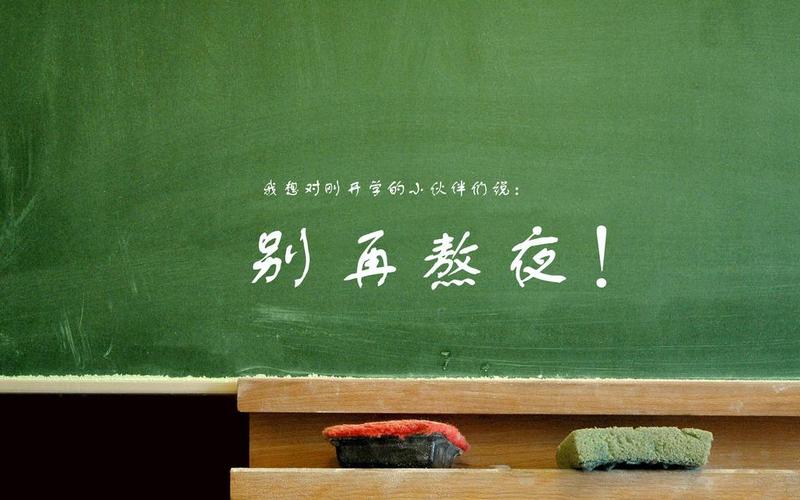
重庆邮电大学移通学院
《电气工程及其自动化专业英语》课程论文
年 级
专 业
姓 名
学 号
Insulated-gate Bipolar Transistor Basics
【】
AbstractModern Power Electronics makes generous u of MOSFETs and
IGBTs in most applications, and, if the prent trend is any indication, the future will
e more and more applications making u of MOSFETs and IGBTs. For
high-voltage or high-power applications, it may be necessary to realize a logical
switch by connecting smaller units in parallel and ries to achieve high availability,
high-frequency operation, and low cost due to build-in redundancy, reduced dynamic
loss, and modular u of standardized units, respectively. IGBTs are very
convenient to realize such units, becau of quasi-linear controllability via a gate
terminal. This thesis investigates control methodologies for power MOS
miconductor switches with focus on combined parallel and ries connection of
IGBT/diode modules. It is propod to provide each IGBT with primary local control
to monitor and adjust the IGBT's static and dynamic behavior. Secondary (global)
control synchronizes the operation of multiple IGBTs. A globally synchronous clock
can also be derived locally. This makes it possible to u low-cost low-bandwidth data
links between ries-connected units. Thereby, a flexible master- slave approach can
avoid the need of dedicated global control. That is, the entire system is manageable by
the local gate drive circuitry.
Keywords: IGBT applications MOSFET characteristic
Introduction:The IGBT is a miconductor device with four alternating layers
(P-N-P-N) that are controlled by a metal-oxide-miconductor (MOS) gate structure
without regenerative action. This mode of operation was first propod by Yamagami
in his Japane patent S47-21739, which was filed in 1968. This mode of operation
was first experimentally reported in the lateral four layer device (SCR) by B.W.
Scharf and J.D. Plummer in 1978. This mode of operation was also experimentally
[1]
discovered in vertical device in 1979 by B. J. Baliga. The device structure was
[2]
referred to as a ‘V-groove MOSFET device with the drain region replaced by a p-type
Anode Region’ in this paper and subquently as 'the insulated-gate rectifier' (IGR),
the insulated-gate transistor (IGT), the conductivity-modulated field-effect transistor
(COMFET) and "bipolar-mode MOSFET".
[3]
IGBT Fundamentals:The Insulated Gate Bipolar Transistor (IGBT) is a
minority-carrier device with high input impedance and large bipolar current-carrying
capability. Many designers view IGBT as a device with MOS input characteristics and
bipolar output characteristic that is a voltage-controlled bipolar device. To make u
of the advantages of both Power MOSFET and BJT, the IGBT has been introduced.
It’s a functional integration of Power MOSFET and BJT devices in monolithic form.
It combines the best attributes of both to achieve optimal device characteristics.
main advantages of IGBT over a Power MOSFET and a BJT are:
1. It has a very low on-state voltage drop due to conductivity modulation and has
superior on-state current density. So smaller chip size is possible and the cost can be
reduced.
2. Low driving power and a simple drive circuit due to the input MOS gate
structure. It can be easily controlled as compared to current controlled devices
(thyristor, BJT) in high voltage and high current applications.
3. Wide SOA. It has superior current conduction capability compared with the
bipolar transistor. It also has excellent forward and rever blocking capabilities.
main drawbacks are:
1. Switching speed is inferior to that of a Power MOSFET and superior to that of a
BJT. The collector current tailing due to the minority carrier caus the turn-off speed
to be slow.
2. There is a possibility of latchup due to the internal PNPN thyristor structure. The
IGBT is suitable for scaling up the blocking voltage capability. In ca of Power
MOSFET, the on-resistance increas sharply with the breakdown voltage due to an
increa in the resistively and thickness of the drift region required to support the high
operating voltage.
Basic Structure:An IGBT cell is constructed similarly to a n-channel vertical
construction power MOSFET except the N+ drain is replaced with a P collector layer,
+
thus forming a vertical PNP bipolar junction transistor. This additional Pregion
+
creates a cascade connection of a PNP bipolar junction transistor with the surface
n-channel MOSFET. Some IGBTs, manufactured without the N buffer layer, are
+
called non-punch through IGBTs whereas tho with this layer are called
punch-through IGBTs. The prence of this buffer layer can significantly improve the
performance of the device if the doping level and thickness of this layer are chon
appropriately. Despite physical similarities, the operation of an IGBT is clor to that
of a power BJT than a power MOSFET. It is due to the P drain layer (injecting layer)
+
which is responsible for the minority carrier injection into the Ndrift region and the
-
resulting conductivity modulation.
IGBT Characteristics:Becau the IGBT is a voltage-controlled device, it only
requires a small voltage on the Gate to maintain conduction through the device unlike
BJT’s which require that the Ba current is continuously supplied in a sufficient
enough quantity to maintain saturation.
Also the IGBT is a unidirectional device, meaning it can only switch current in the
“forward direction”, that is from Collector to Emitter unlike MOSFET’s which have
bi-directional current switching capabilities (controlled in the forward direction and
uncontrolled in the rever direction).
The principal of operation and Gate drive circuits for the insulated gate bipolar
transistor are very similar to that of the N-channel power MOSFET. The basic
difference is that the resistance offered by the main conducting channel when current
flows through the device in its “ON” state is very much smaller in the IGBT. Becau
of this, the current ratings are much higher when compared with an equivalent power
MOSFET.
[4]
The main advantages of using the Insulated Gate Bipolar Transistor over other
types of transistor devices are its high voltage capability, low ON-resistance, ea of
drive, relatively fast switching speeds and combined with zero gate drive current
makes it a good choice for moderate speed, high voltage applications such as in
pul-width modulated (PWM), variable speed control, switch-mode power supplies
or solar powered DC-AC inverter and frequency converter applications operating in
the hundreds of kilohertz range. A general comparison between BJT’s, MOSFET’s
and IGBT’s is given in the following table.
IGBT Operating area:The safe operating area is defined as the current-voltage
boundary within which a power switching device can be operated without destructive
failure. For IGBT, the area is defined by the maximum collector-emitter voltage V CE
and collector current I C within which the IGBT operation must be confined to protect
it from damage. The IGBT has the following types of SOA operations: forward-biad
safe operating area , rever-biad safe operating area and short-circuit safe operating
area .
Collector Current (I ):
Within its thermal limits, the IGBT can be ud to a
peak current well above the rated continuous DC current. The temperature ri during
a high current transient can be calculated with the help of the transient thermal
impedance curve or simulated in SPICE with the parameters provided in the curve.
The test circuit is shown in the data sheet.
tor-to-Emitter Voltage (V):
Voltage across the IGBT should never exceed this
rating, to prevent breakdown of the collector-emitter junction. The minimum value of
the breakdown is stated in the Table of Electrical Characteristics.
m Gate-to-Emitter Voltage (V ):
The gate voltage is limited by the thickness and
characteristics of the gate oxide layer. Though the gate dielectric rupture is typically
around 80 volts, the ur is normally limited to 20 or 30V to limit current under fault
conditions and to ensure long term reliability.
d Inductive Load Current (I ):
This rating is described in Section 6 and is
important in most hard-switching applications. The test circuit can be found in the
data sheet (it has changed over the years) and is the same as the switching loss test
circuit. This circuit expos the IGBT to the peak recovery current of the
free-wheeling diode, which adds a significant component to the turn-on loss. This
rating guarantees that the device can sustain high voltage and high current
simultaneously, i.e. a square switching SOA. The test conditions for I LM are
specified in the data sheet. This complements the information supplied by the
RBSOA.
CM
CES
GE
LM
References:
[1] B.W. Scharf and J.D. Plummer, 1978 IEEE International Solid-State Circuits Conference,
SESSION XVI FAM 16.6 "A MOS-Controlled Triac Devices"
[2] B.J. Baliga, "ENHANCEMENT- AND DEPLETION-MODE VERTICAL-CHANNEL M.O.S.
GATED THYRISTORS" Electronics Letters p.645(1979)
[3] wa et al., "High voltage bipolar-mode MOSFETs with high current capability", Ext.
Abst. of SSDM, pp. 309–312(1984)
[4] Ralph Locher, “Introduction to Power MOSFETs and their Applications” Fairchild
Semiconductor, Application Note 558, October 1998.

本文发布于:2023-10-29 13:58:32,感谢您对本站的认可!
本文链接:https://www.wtabcd.cn/zhishi/a/1698559112200229.html
版权声明:本站内容均来自互联网,仅供演示用,请勿用于商业和其他非法用途。如果侵犯了您的权益请与我们联系,我们将在24小时内删除。
本文word下载地址:电气工程及其自动化专业英语》课程论文.doc
本文 PDF 下载地址:电气工程及其自动化专业英语》课程论文.pdf
| 留言与评论(共有 0 条评论) |